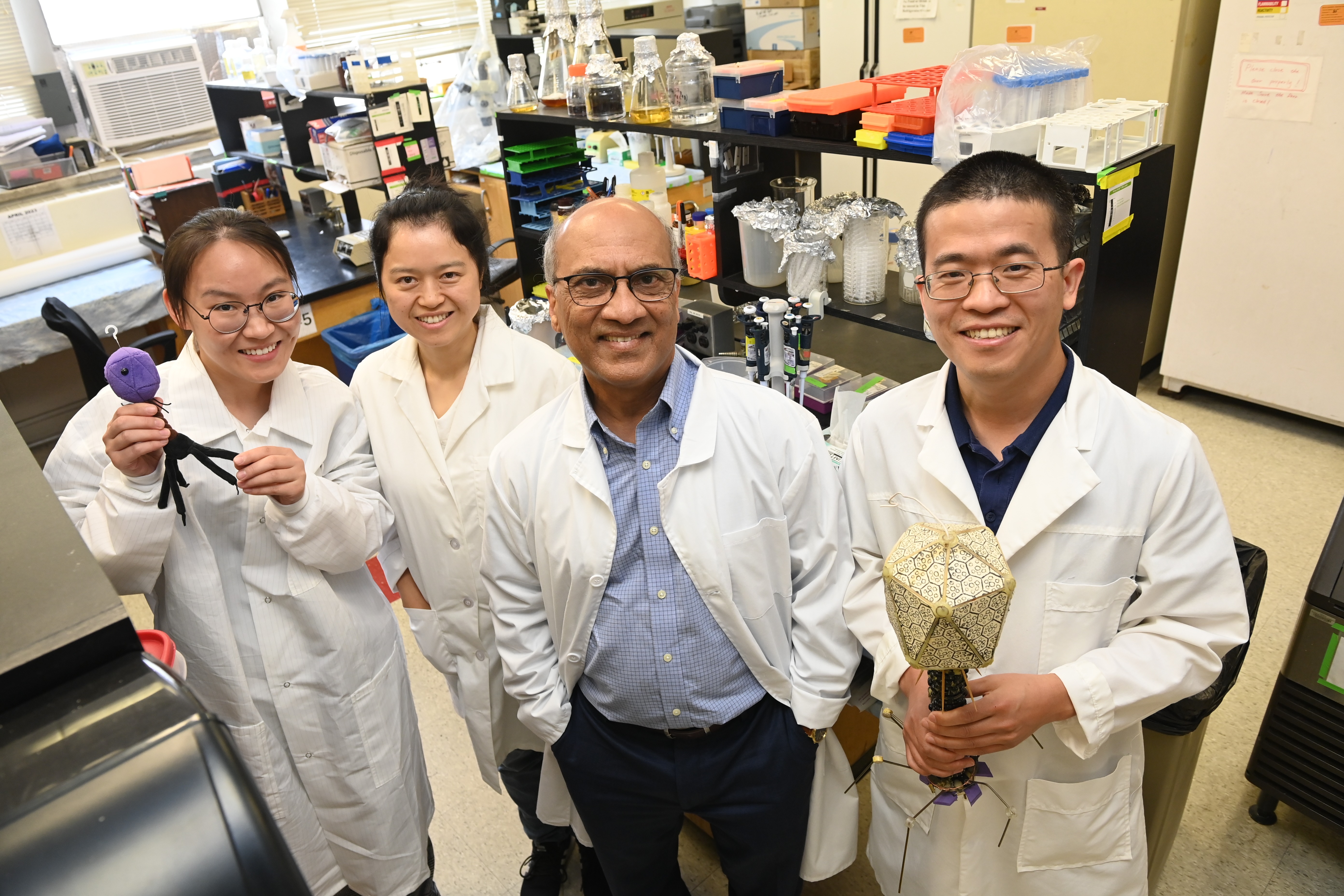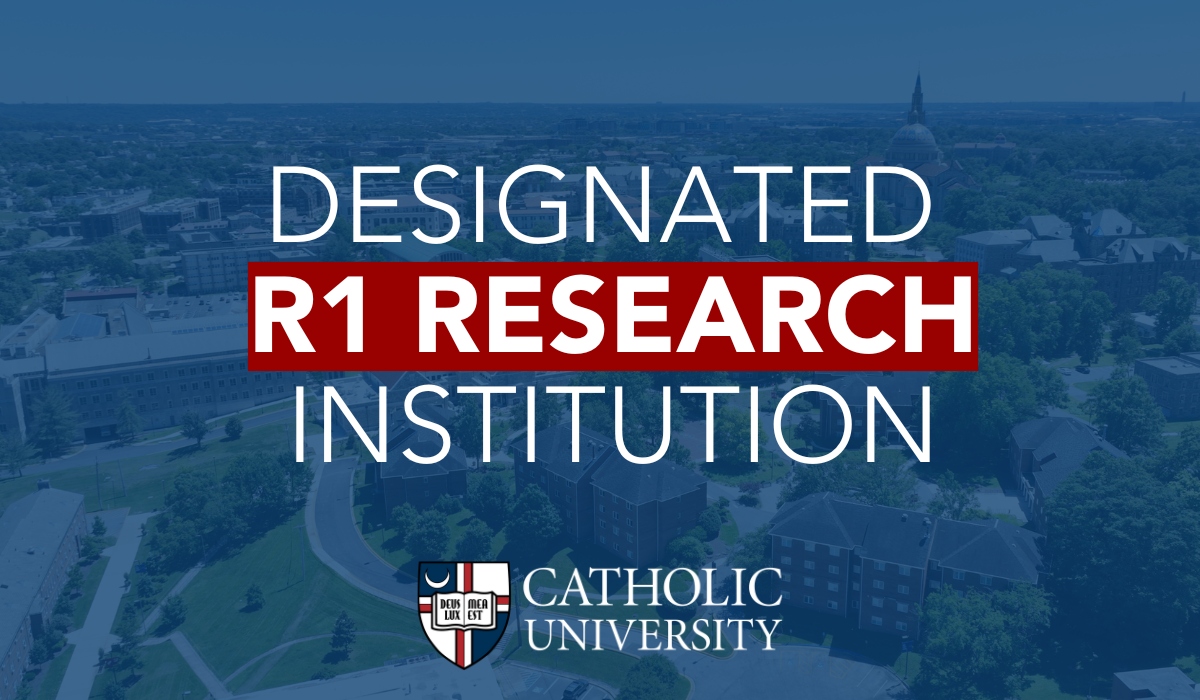A new gene therapy technology being developed on campus could open the doors to healing and curing a variety of ailments, according to new research by Biology Professor Venigalla Rao published May 30 in the international scientific journal Nature Communications.
Rao is the founding director of The Catholic University of America’s Bacteriophage Medical Research Center devoted to researching the therapeutic potential of a type of virus called bacteriophage T4 that grows on E.coli bacteria that cannot infect humans and many of which are part of a healthy body’s microbiome.
Rao and his co-authors have shown for the first time that the bacteriophage T4 can be enrobed in a lipid, an innovation that smoothes the transfer of lifesaving treatments to human cells. Their research also proves that the bacteriophage T4 has much larger payload capacity and engineering capability to deliver a wider range of therapies than current technologies. In other words, there is great potential for a variety of treatments to be delivered more quickly, safely, and cost effectively to alleviate the suffering of future patients.
“We believe we have shown that there is a pathway to develop safe, effective bacteriophage-based gene therapy treatments with almost unlimited healing potential” for genetic conditions like sickle cell disease, diabetes, and cancer. “This is a major step forward to expanding the existing gene therapy space, and also creating a new space for future therapies and cures,” said Rao.
Report co-authors Jingen Zhu, Xiaorong Wu, and Wenzheng Guo continue working on the project under Rao’s direction at the Bacteriophage Medical Research Center, where most of the study was conducted. Purdue University structural biologist and longtime collaborator Andrei Fokine contributed to the work by determining the atomic structure of a new capsid shell engineered at the center.
“The actual therapy is years down the road, but this research provides a model for developing lifesaving treatments and cures,” said Rao. “What we are researching is like a molecular surgery that can safely and precisely correct a defect and generate therapeutic outcomes and someday cures.”
Current gene therapy research can be categorized into three major approaches that rely on the following vectors, or vehicles for treatment: adeno-associated viruses and lentiviruses, lipid nanoparticles, and synthetic nanoparticles. All of these treatments remain experimental.
Rao said progress in the field over the past three decades has been incremental because the current vectors have “very limited load capacity, limited engineering and cell targeting capability, many safety concerns, and the complicated processes to produce these therapies are extraordinarily expensive.” Rao said his team’s research on bacteriophage T4 proves that a new type of therapy that avoids these technological limitations and safety issues is “not only possible, but feasible.”
Rao said advancing to the next phase will require an influx of potentially millions of dollars, but he believes that with the right funding, they could take the technology to the clinic in as little as five years.
The ultimate goal, Rao said, is that unlike the current small molecule pharmaceuticals that sometimes have to be taken for a lifetime, a future bacteriophage-based drug “could lead to cures within hours to days.”
The study was funded by the National Institutes of Health and the National Science Foundation.



